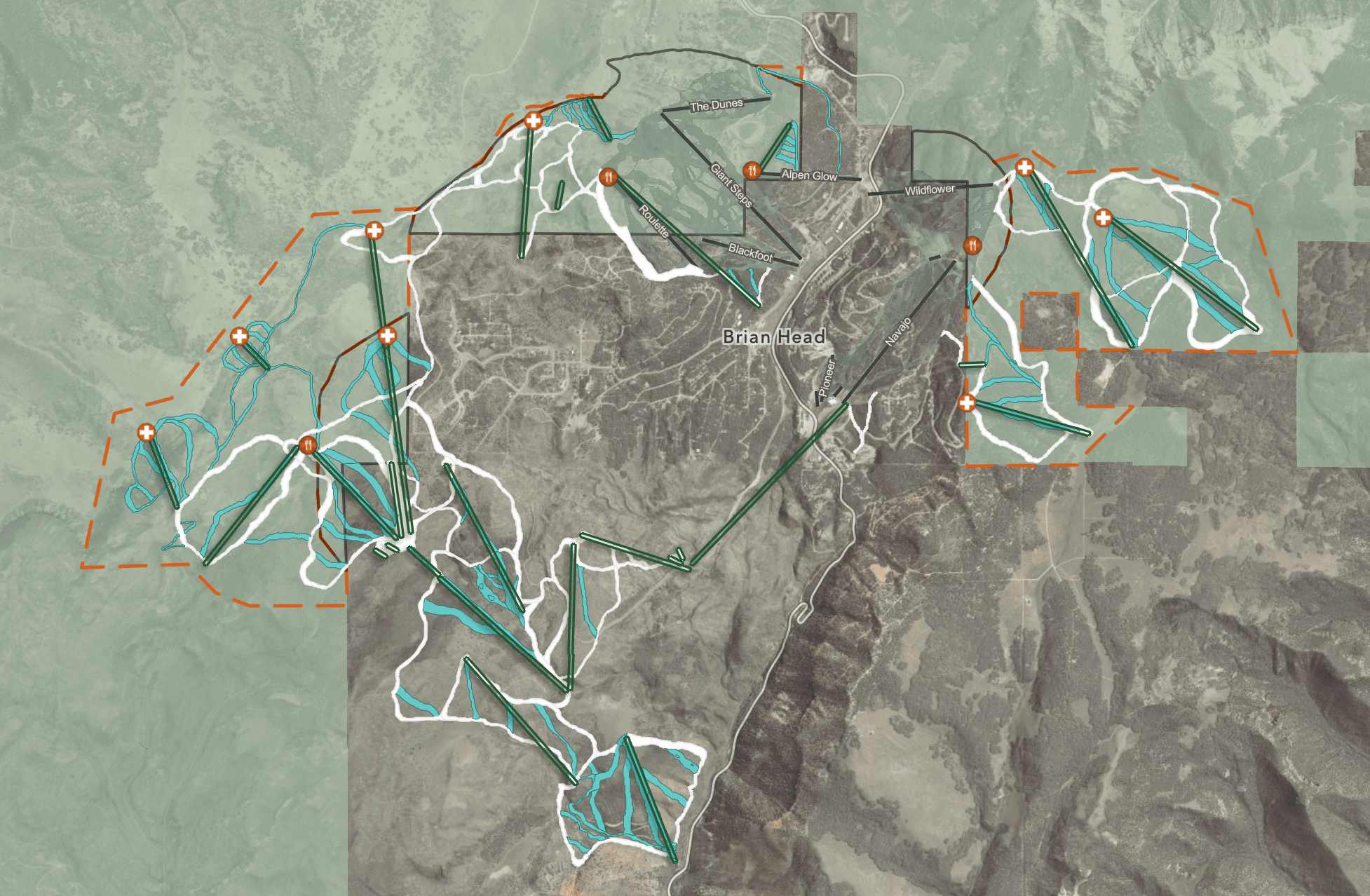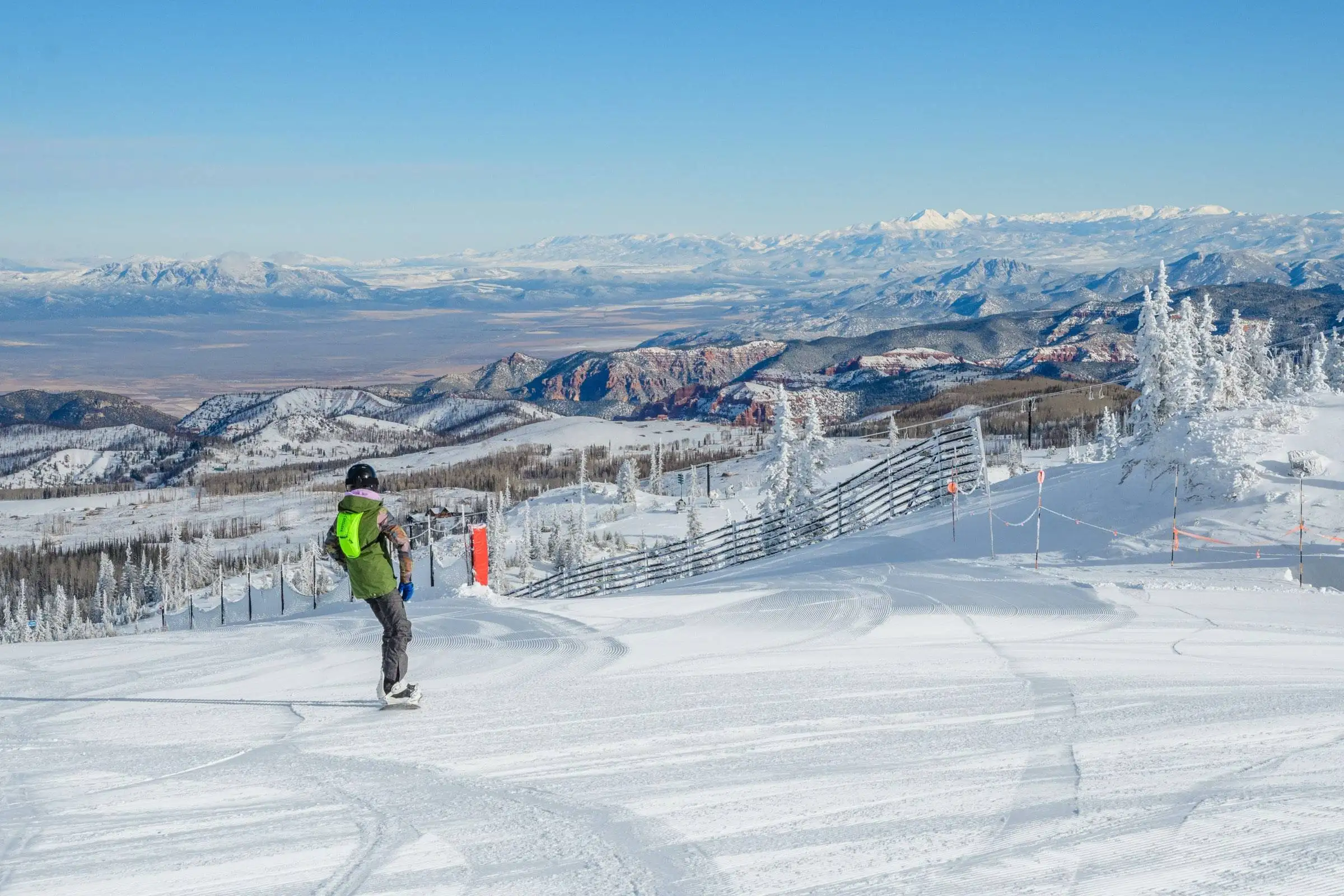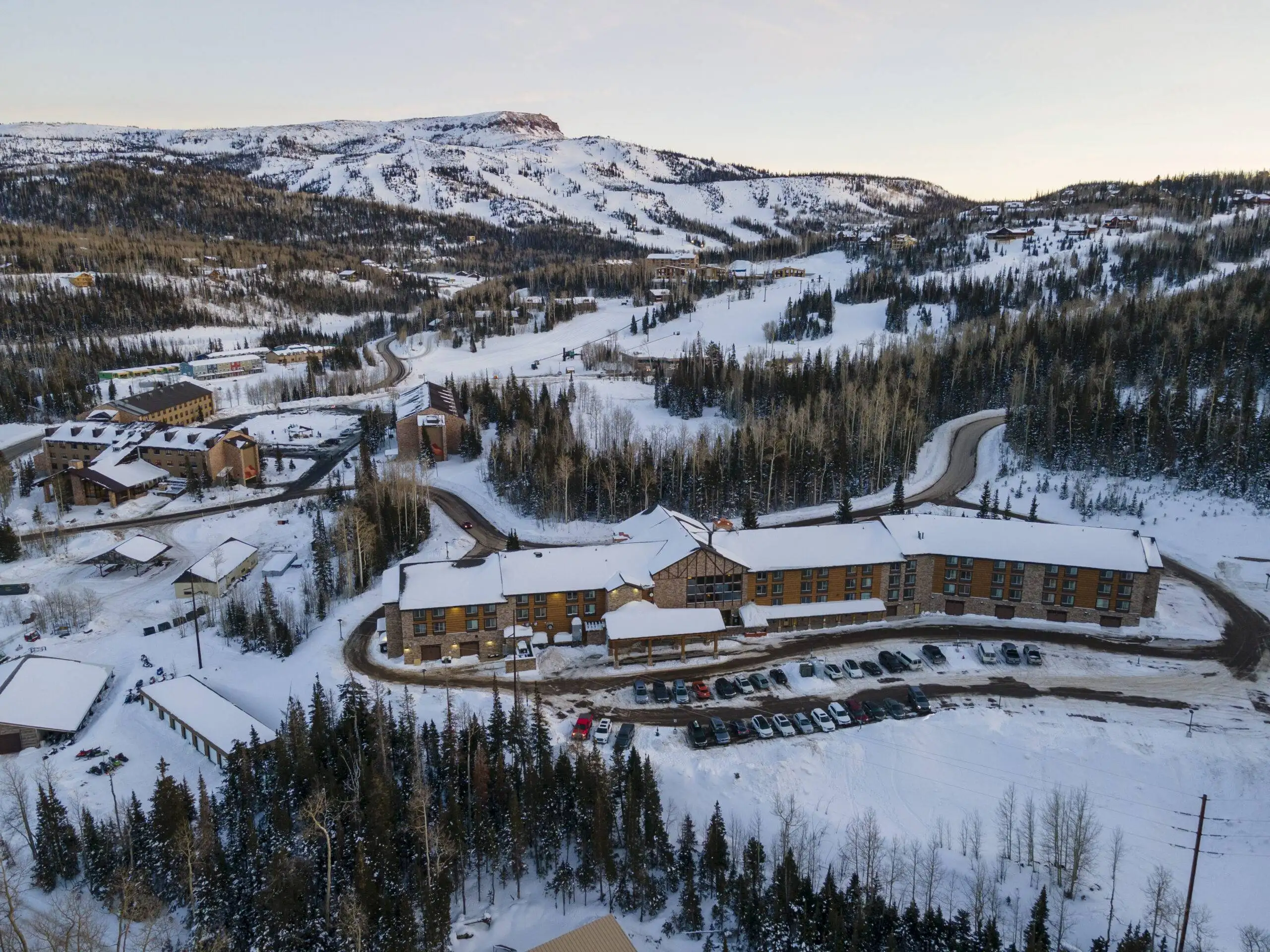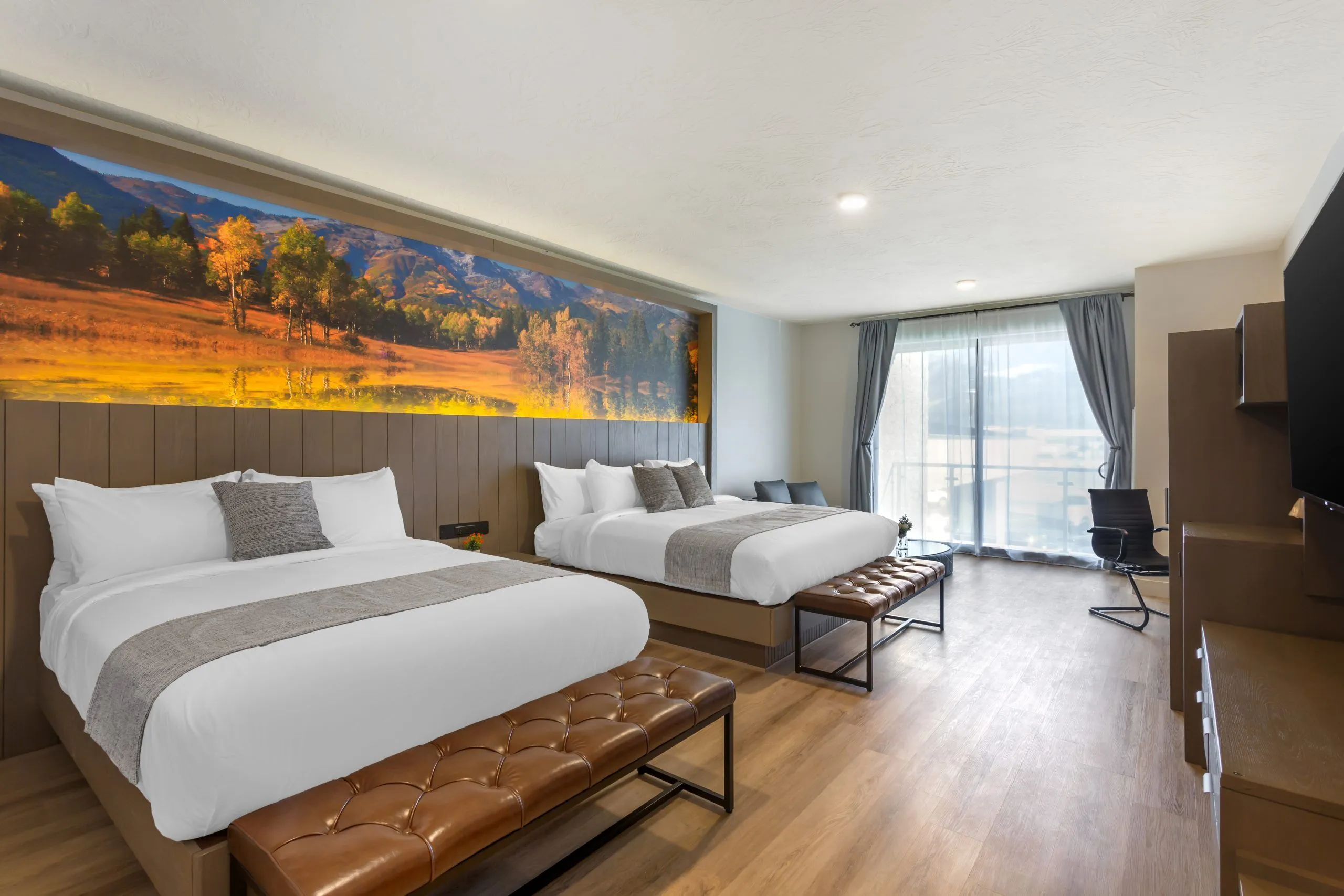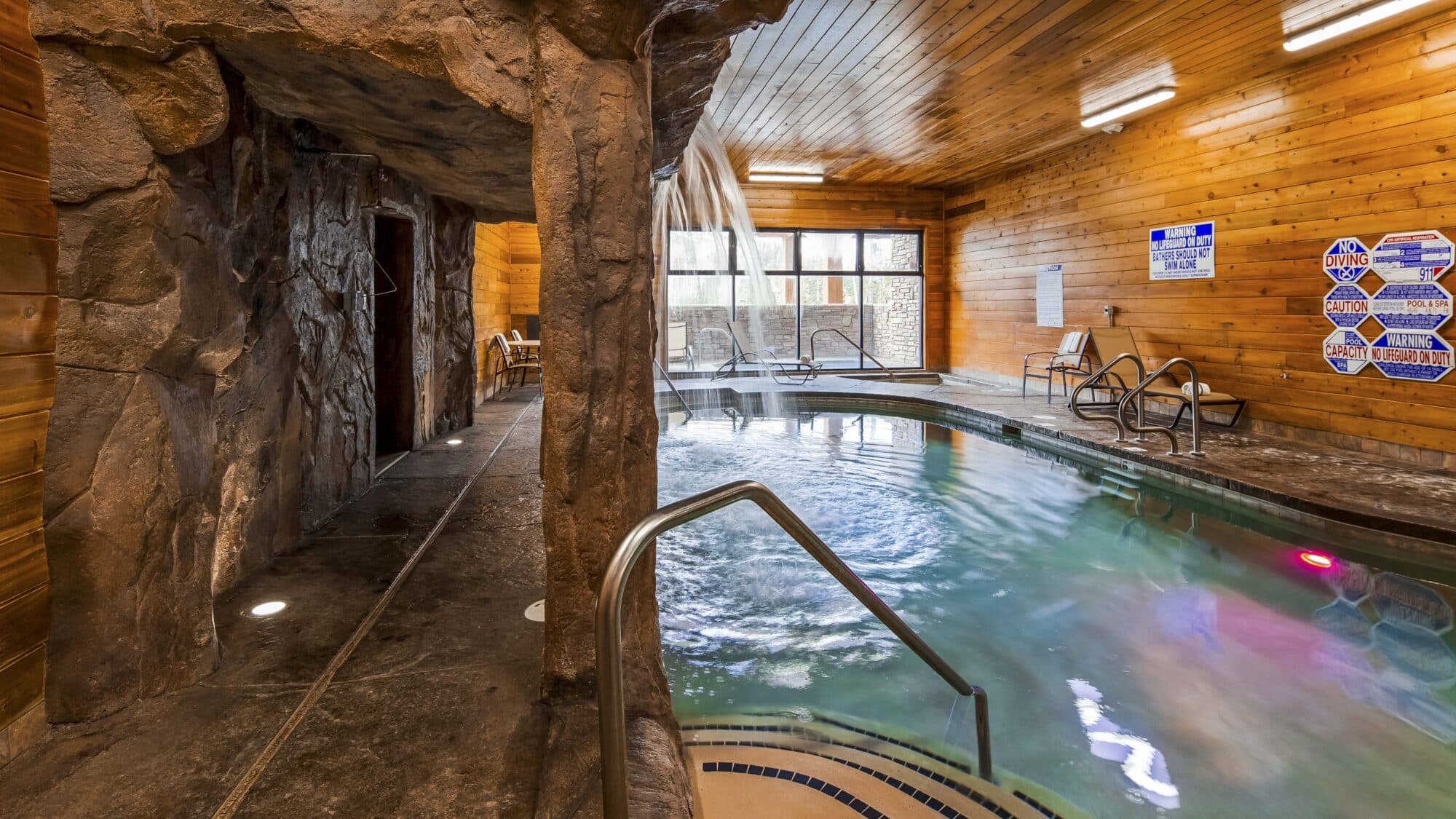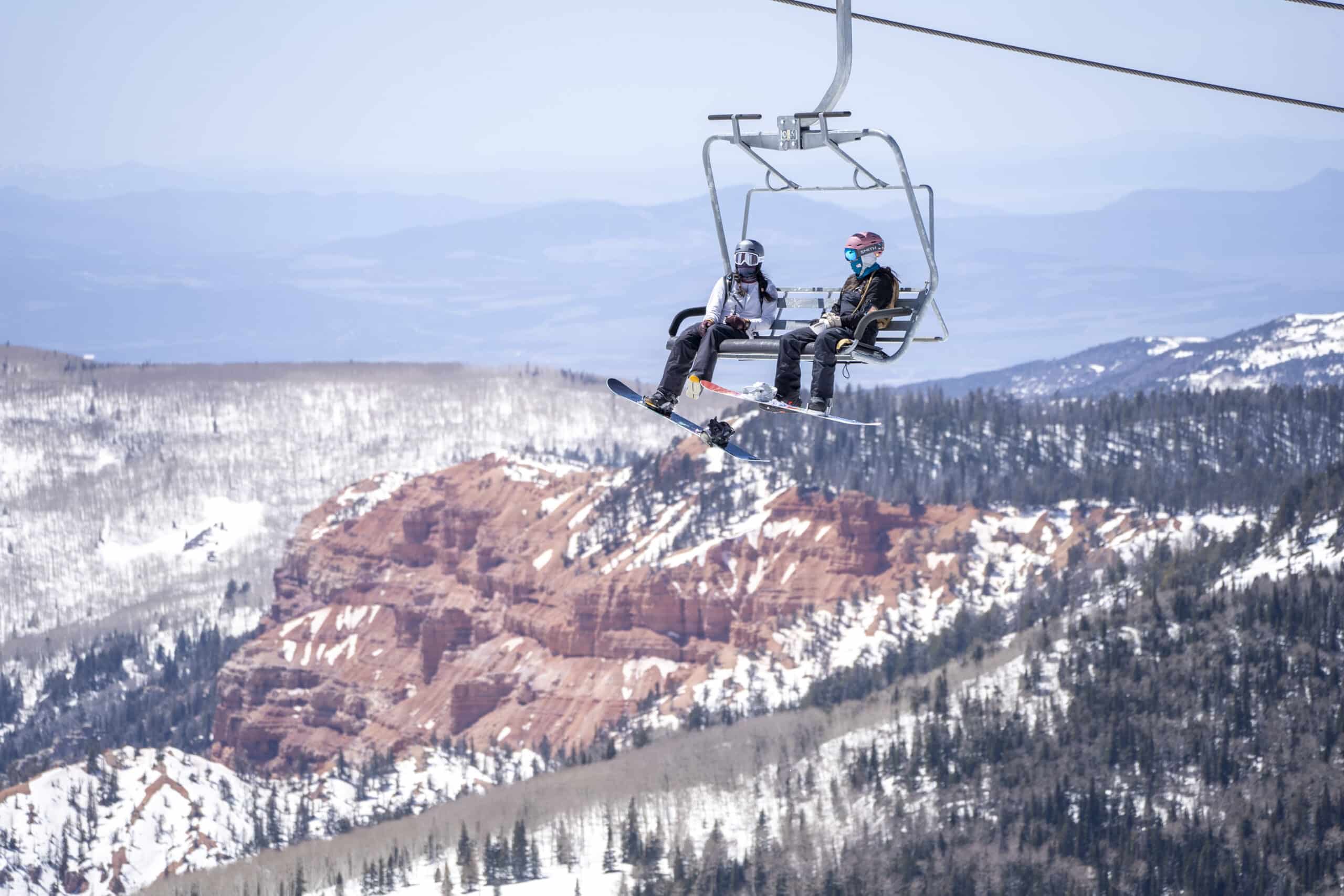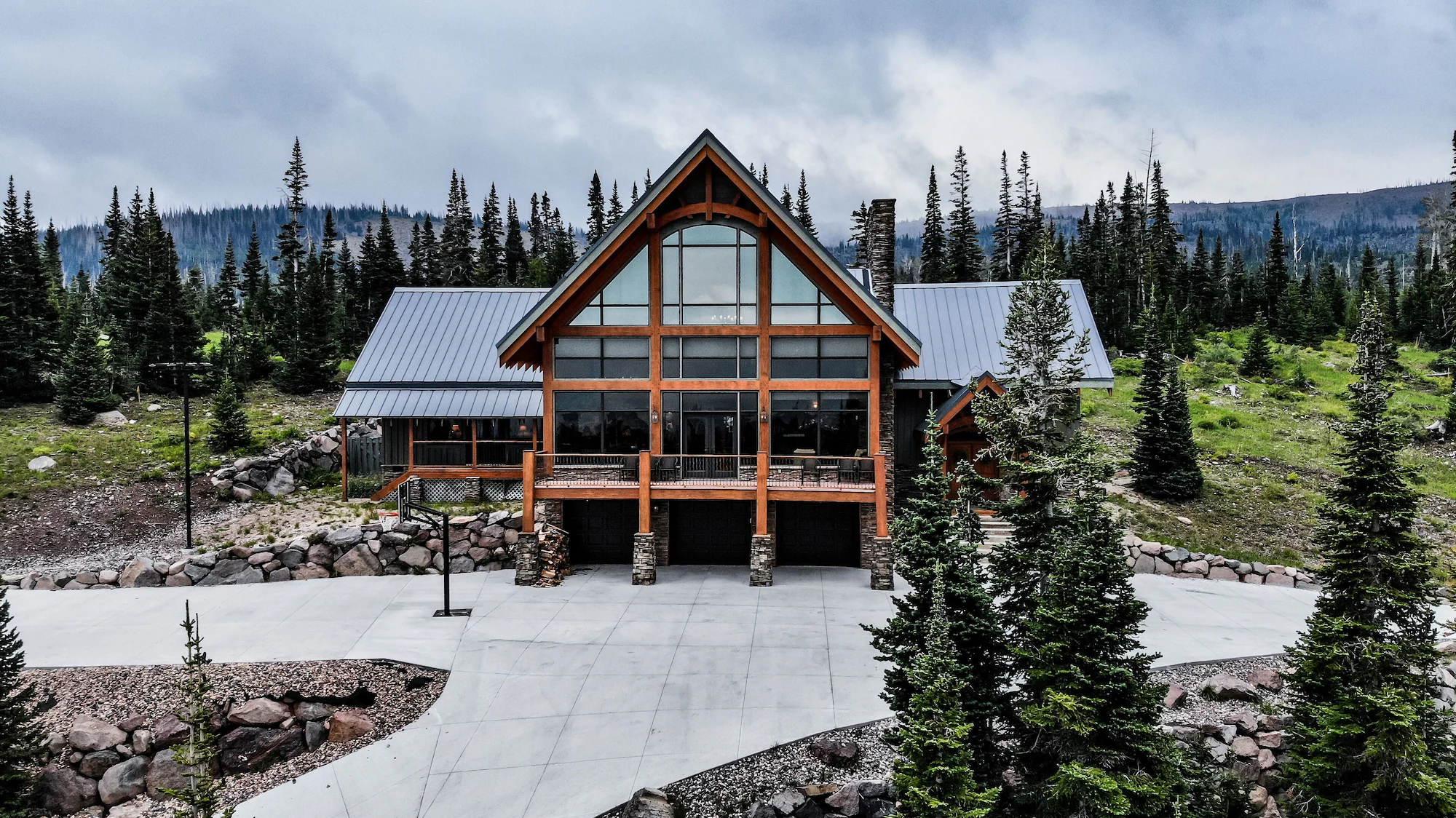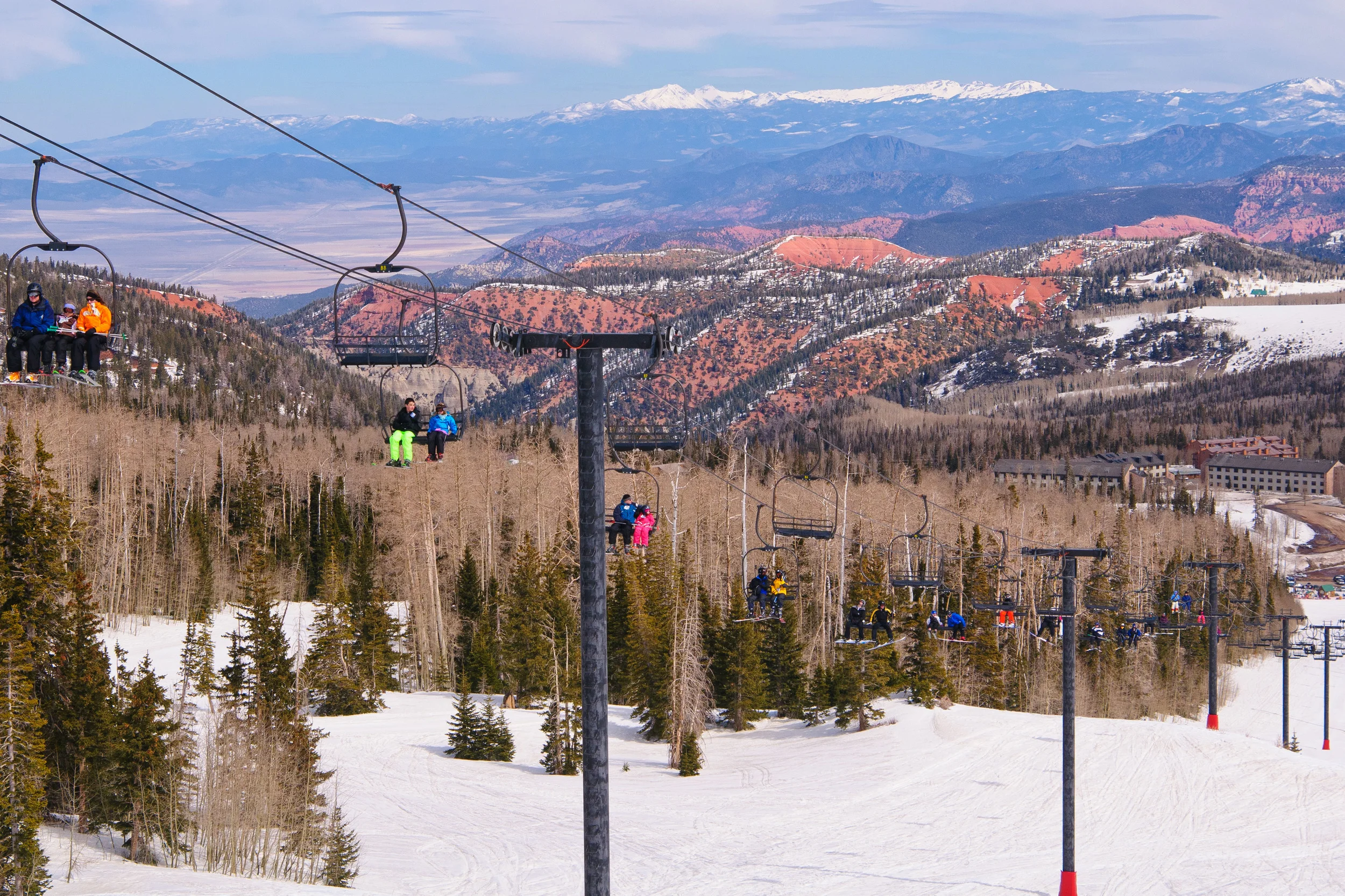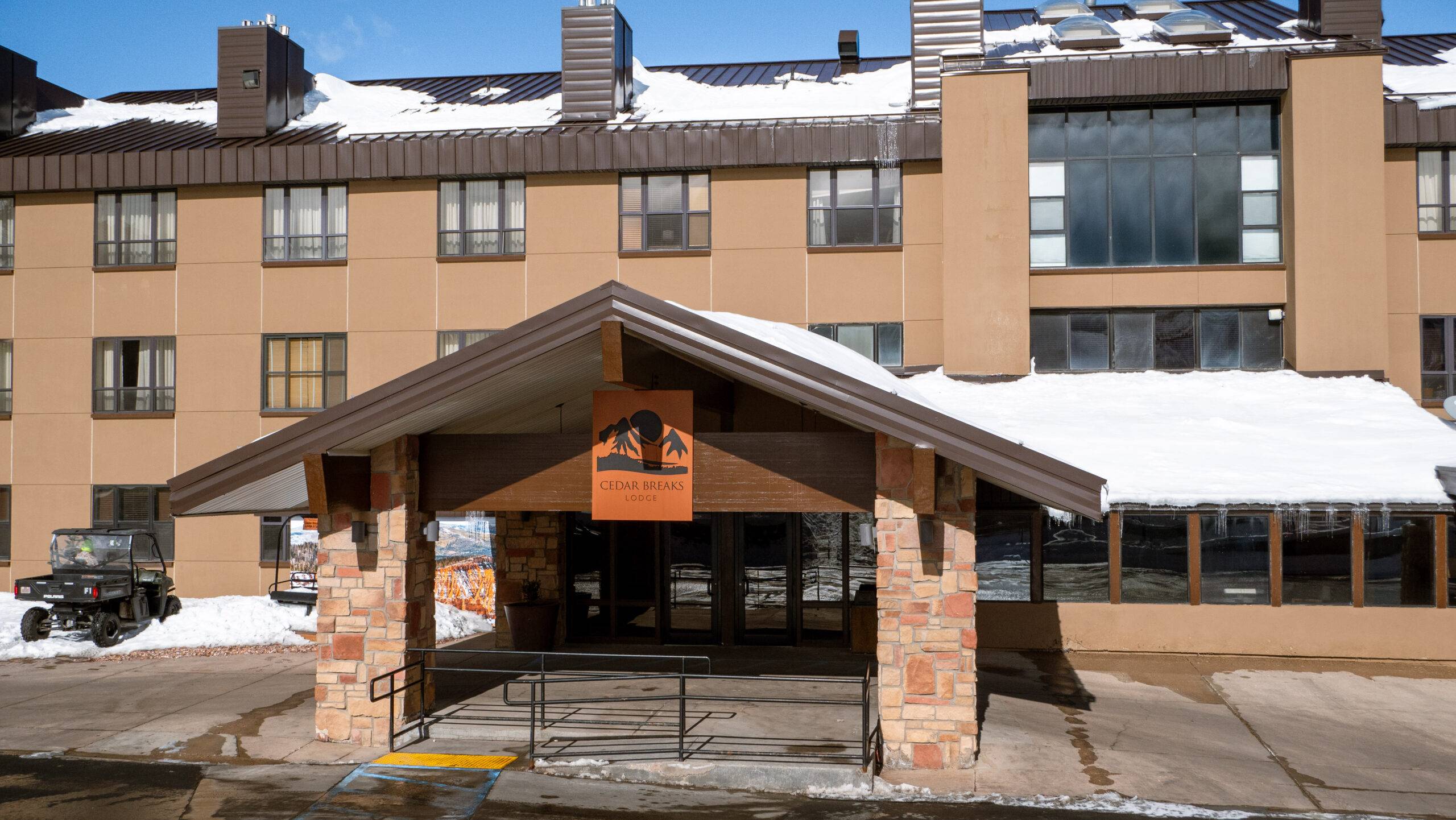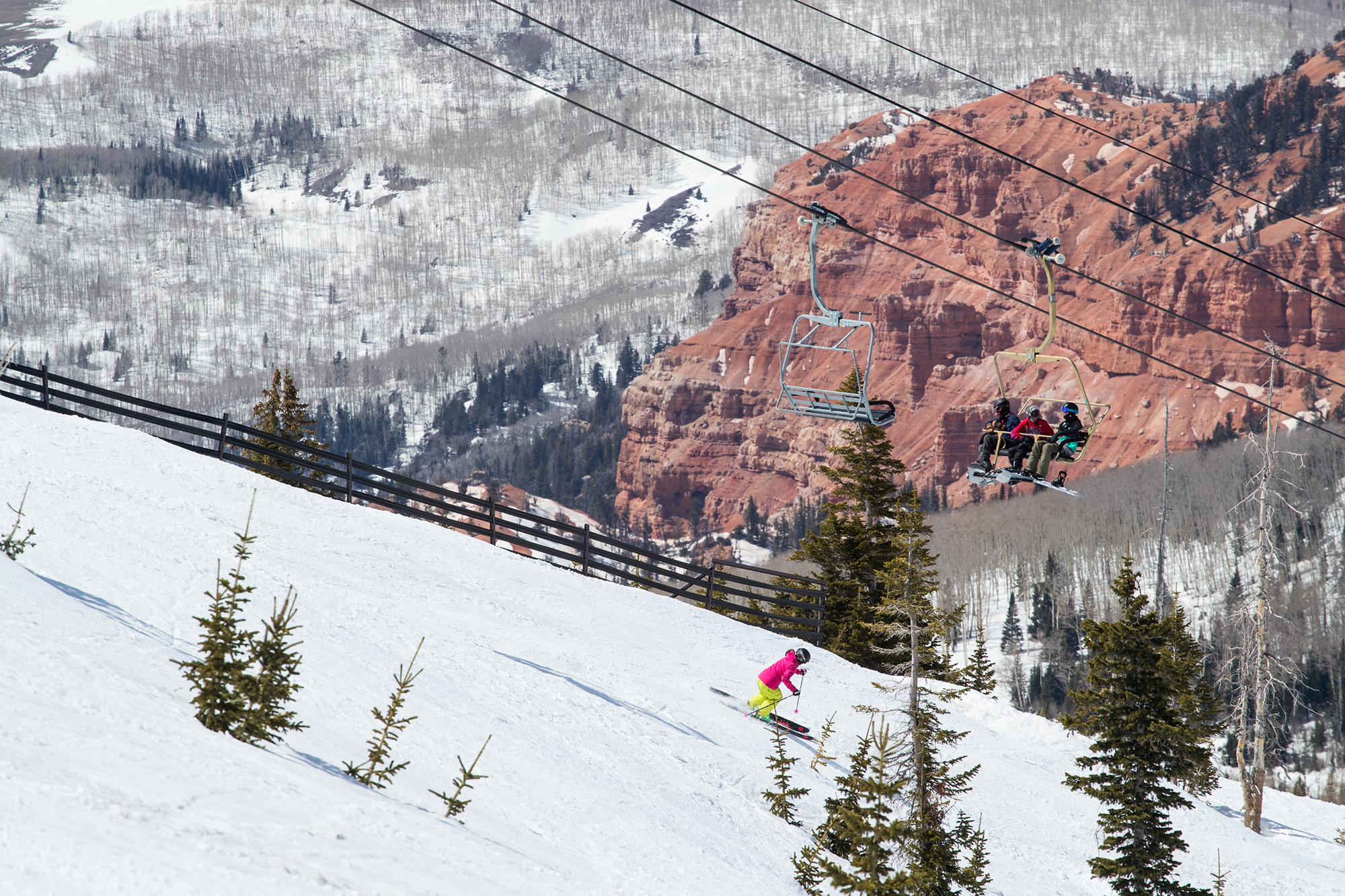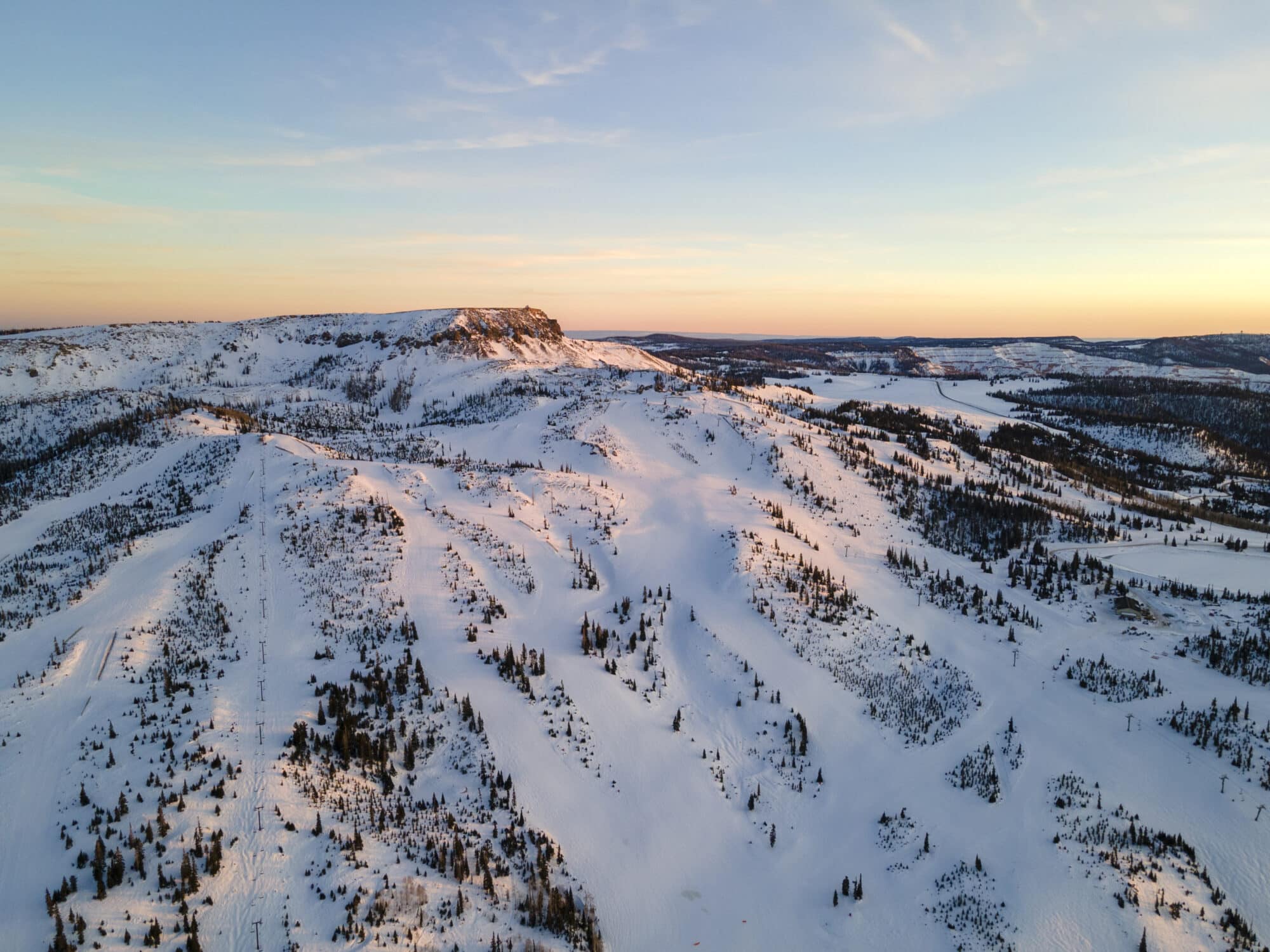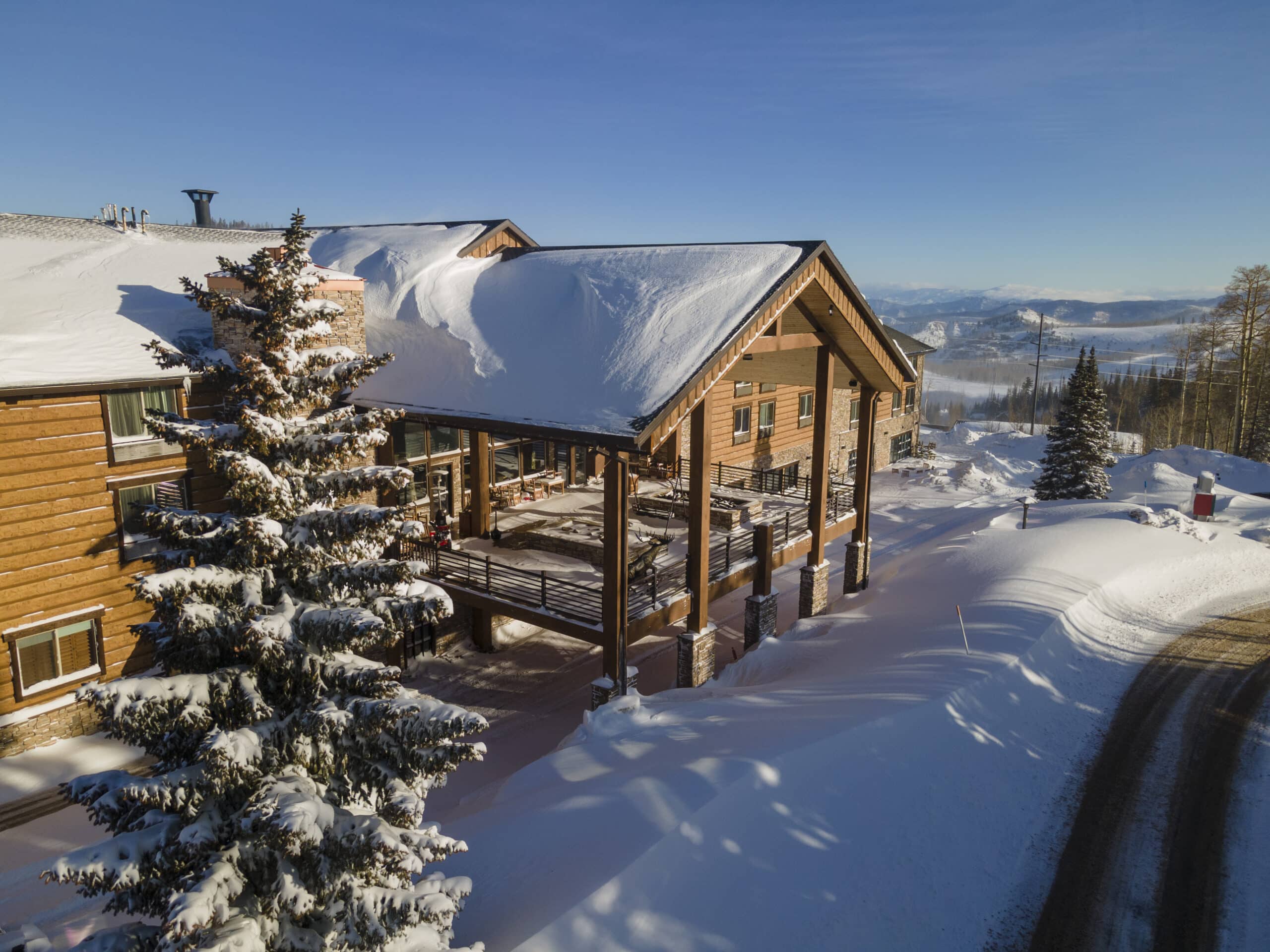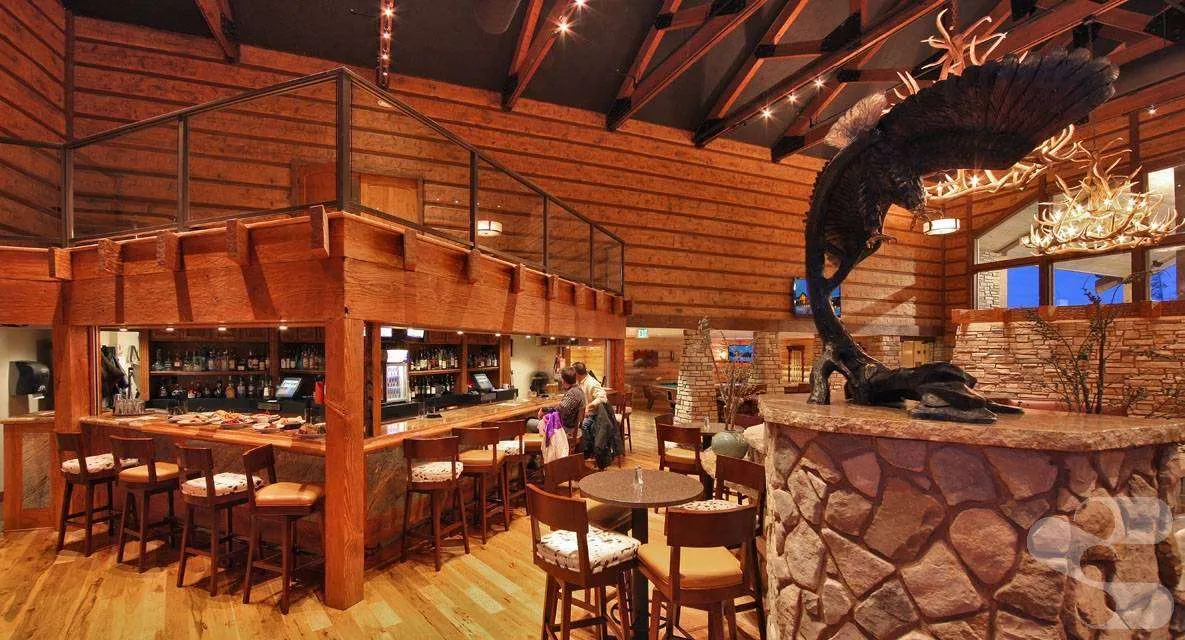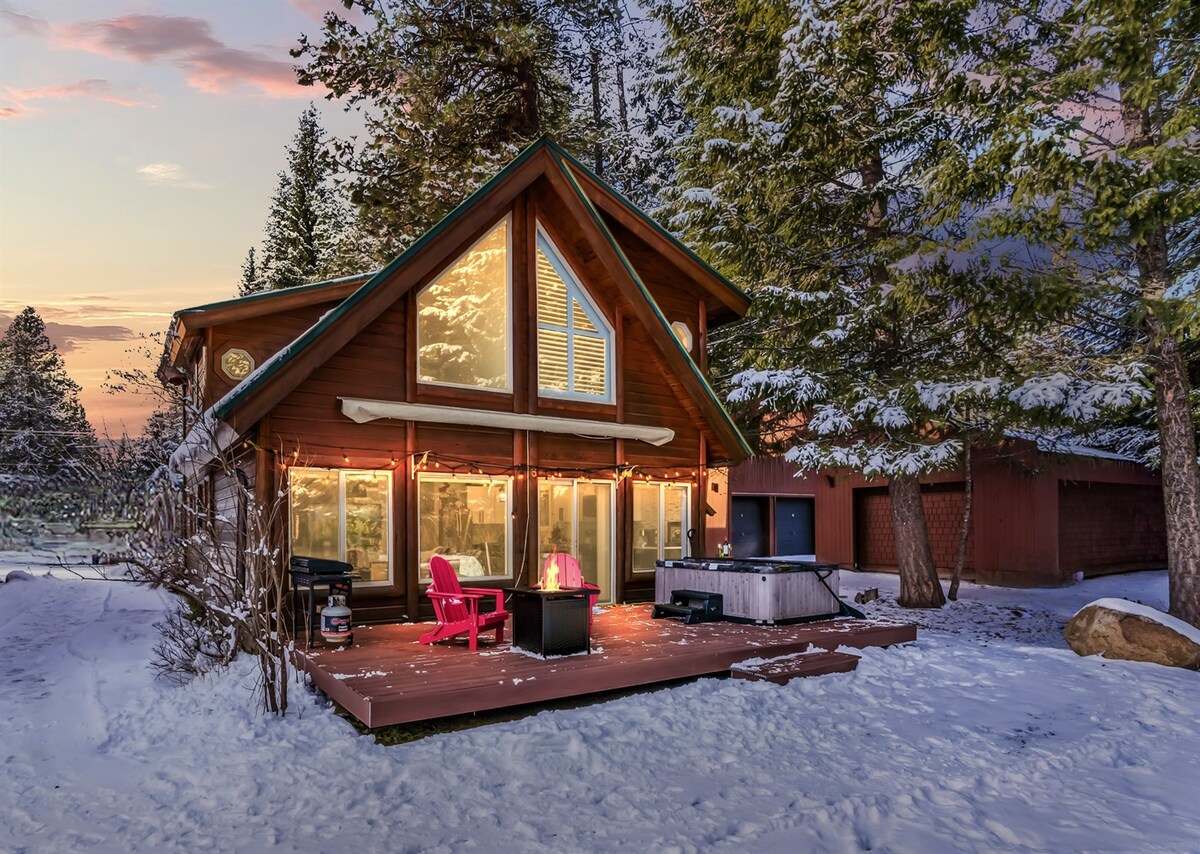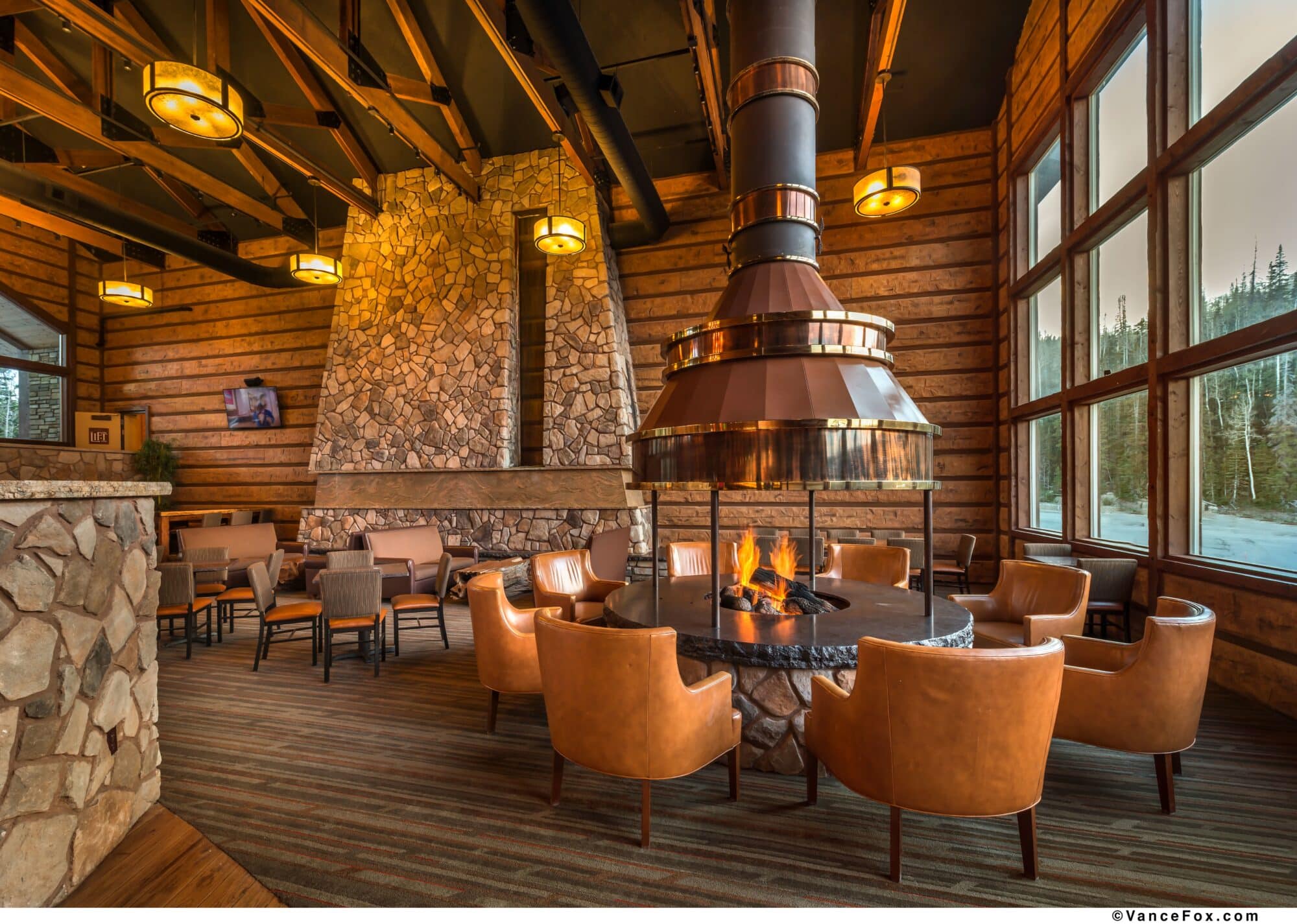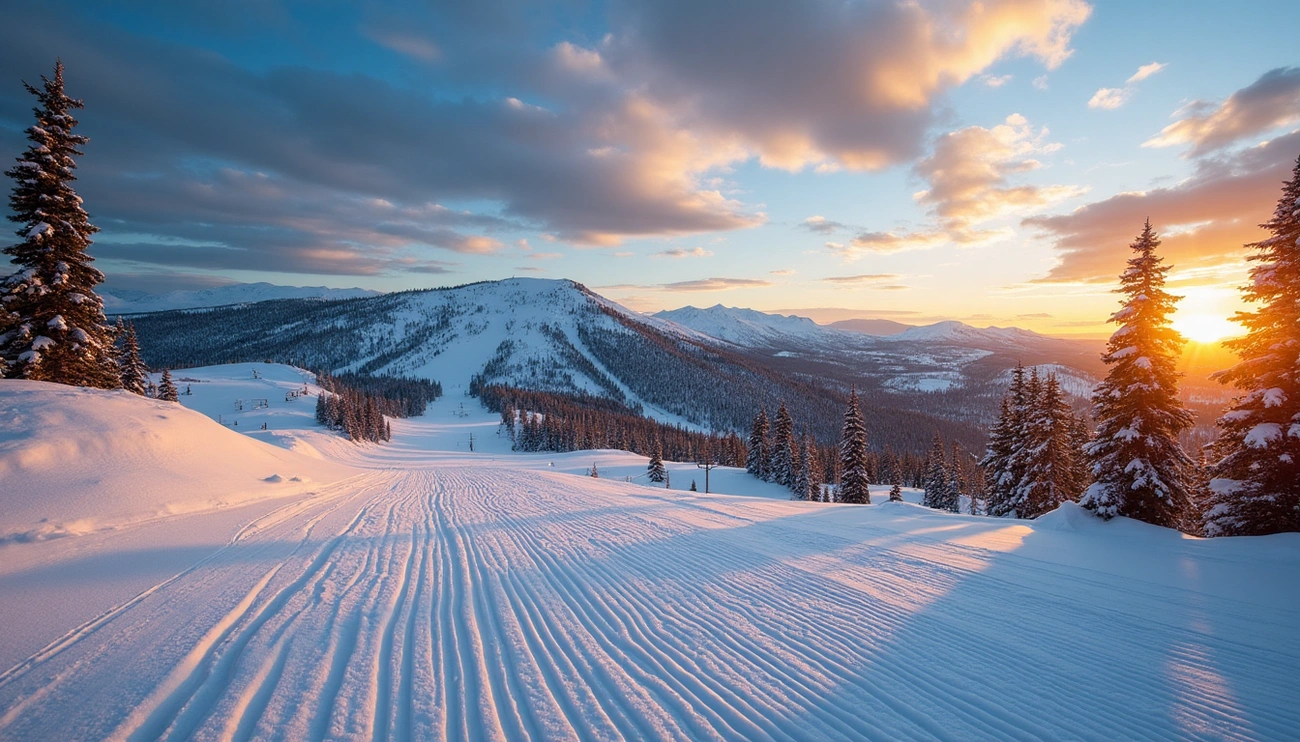Environmental Impact Statement
- Introduction & Background
- Purpose & Need
- Brian Head’s Proposal
- Analysis to be Completed
- Public Involvement
Brian Head Resort (Brian Head), a popular ski resort in southern Utah, is planning a major expansion and development of its facilities. The proposed project includes increasing the size of the ski resort, adding new ski trails, lifts, and improving snowmaking capabilities. These changes are subject to an environmental review and public input process.
Introduction & Background
The Dixie National Forest (DNF) is conducting an environmental review in accordance with the National Environmental Policy Act (NEPA) in response to a proposal submitted by Brian Head Resort (Brian Head) to implement projects identified in the Resort’s 2023 Master Development Plan (MDP ).
This interactive document aims to ensure a comprehensive understanding of the Resort’s proposal and scope of the analysis to promote public feedback and USFS decision making.
Brian Head operates on National Forest System (NFS) lands under a special use permit (SUP). The resort encompasses approximately 896 acres with operations on both sides of State Highway 143. In addition to NFS lands, the Resort also operates on a combination of state, town, and private property.
Brian Head is located on the Cedar City Ranger District of the DNF approximately 12 miles east of Cedar City, UT.
Proposed Action
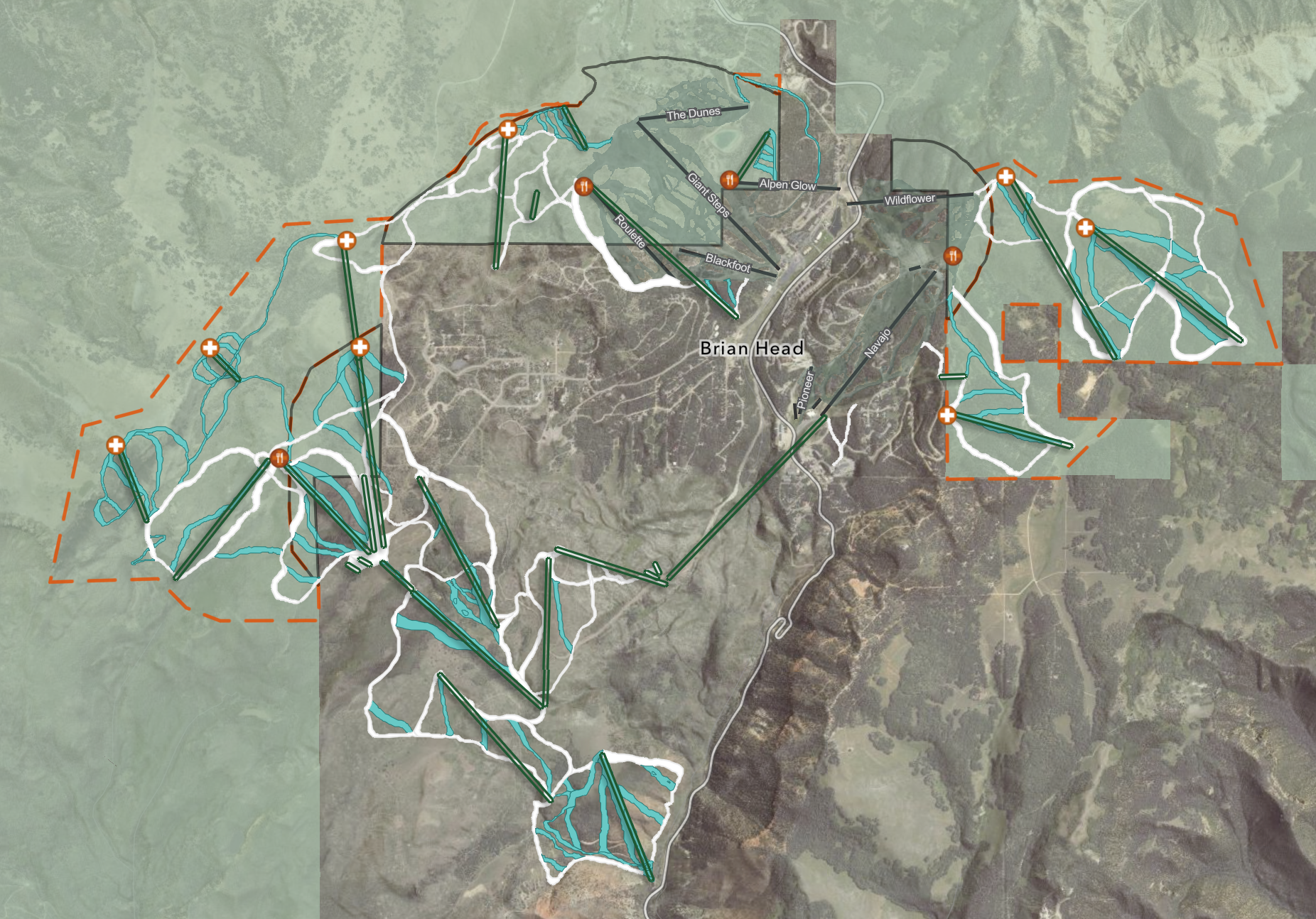
Proposed Action Infographic
The proposed action on, and connected to, the Dixie National Forest includes:
- the expansion of Brian Head Resort’s existing special use permit boundary by 1,651 acres;
- construction of up to 382 acres of new ski trails;
- installation of 14 new lifts;
- construction of four new on-mountain restaurants;
- construction of eight new ski patrol spaces (four additional new patrol spaces co-located with other new infrastructure);
- construction of 19 miles of new snowmaking lines (186 acres of new snowmaking);
- construction of up to 10 miles of new roads and up to five miles of improvements to existing roadbeds;
- installation of up to 13 miles of new utilities;
- re-routing of an existing snowmobile route; and
- removal of hazard trees and post-fire treatment of approximately 520 acres impacted by the 2017 Brian Head Fire.
Project Location and Setting
The Brian Head Resort expansion is set within the scenic Dixie National Forest, just outside the mountain town of Brian Head and a short drive from Cedar City, Utah. The project area encompasses the existing 896-acre resort, which includes 887 acres of national forest land, and proposes to add 1,651 acres of additional national forest lands to the resort’s footprint. Brian Head Resort plans to add these 1,651 acres of Dixie National Forest Land to its permit with the Forest Service. This unique location places Brian Head Resort in close proximity to iconic natural landmarks such as Cedar Breaks National Monument and Zion National Park, making it a gateway to some of southern Utah’s most treasured landscapes.
The surrounding environment is characterized by high-elevation forests, dramatic ridgelines, and diverse wildlife habitats, including those of the rocky mountain elk and the rare Brian Head Mountain snail. The resort’s setting near Brian Head Town, Brian Head Lodge, and Southern Utah University means that the expansion could have direct and indirect effects on local communities, educational institutions, and tourism in the region. The Forest Service is tasked with ensuring that all development on national forest lands complies with environmental regulations and that the project incorporates appropriate environmental protection measures to safeguard the area’s natural and cultural resources. This careful stewardship is especially important given the resort’s adjacency to protected areas and its role in supporting both recreation and conservation in the Dixie National Forest.
Purpose & Need
The purpose of, and need for, Forest Service action is to respond to an application submitted by Brian Head under the National Forest Ski Area Permit Act of 1986 and Ski Area Recreational Opportunity Act of 2011 to implement projects under their accepted MDP. Based on DNF’s 1986 Forest Plan, the Forest Service identified the need to meet the demand for increased downhill skiing capacity. The Forest Service will use the Environmental Impact Statement (EIS) to inform the decision regarding whether to approve, in whole or in part, Brian Head’s application; the selection of a preferred alternative; determine appropriate environmental protection measures; and establish, if necessary, the applicable terms and conditions with the issuance of an amended special use permit.
The resort’s goals and objectives are outlined in their MDP and are described below. Specifically, Brian Head has identified the need to:
- 1. Expand terrain offerings for a more diverse and quality recreation experience within and adjacent to the existing SUP area.
- 2. Expand resort capacity and establish strategically located portals, to improve access to public lands and to accommodate growing visitation and rising demand for more recreational opportunities in the region and state.
- 3. Improve the learning progression for guests of varying ability levels while enhancing the resort’s existing, family-friendly skiing experience. In doing so, provide connectivity between base areas and on-mountain hubs by creating a unique circuit in which skiers and riders could circumnavigate Brian Head Town via new lifts and terrain in a clockwise or counterclockwise direction, connecting all major lifts and terrain pods.
- 4. Provide upgraded amenities and guest services outside the existing, constricted base area, providing a wider array of dining options, decongesting existing facilities, and improving the guest experience at the resort.
- 5. Manage Hazard Trees and treat vegetation in areas impacted by the 2017 Brian Head Fire to accommodate skiing and riding in the Sid’s Peak to East Ridge Pod.
Brian Head’s Proposal
To address the aforementioned deficiencies and provide an improved, unique, and balanced guest experience, Brian Head proposes…
Special Use Permit (SUP) Boundary Adjustment
The existing 887-acre SUP would increase by 1,651 acres, totaling 2,538 acres.
The SUP boundary adjustment is necessary to accommodate the additional terrain, lifts, and facilities that would be built to increase the resort’s capacity.
Proposed Lift Infrastructure, Ski Terrain, Snowmaking, Guest Service Facilities, and Ski Patrol
The proposed action on and connected to NFS lands includes:
Brian Head’s Daily On-Mountain Capacity
- Increase Brian Head’s resort capacity with proposed infrastructure.
Lift Infrastructure
- The installation of a total of 14 new lifts on NFS lands and directly connected private land. This includes:
- 7 new aerial lifts on NFS lands
- 3 new surface lifts on NFS lands
- 4 new aerial lifts spanning private and NFS lands (considered connected actions)—specifically, Sid’s Peak lift, Summit lift, Roulette 2, and Dragon’s Back.
Click the buttons below to see the proposed lifts.
Ski Terrain
- The construction of up to 382 acres of new ski trails, all of which would be clear-cut and graded smooth, including cutting of trees and stumps at ground level (and stump removal as necessary) and blasting as necessary.
- Due to the size and complexity of the proposed project, project elements, including ski terrain, have been geographically split into ‘pods’ which include:
- Giant Steps to Brian Head Peak Pod
- Sid’s Peak to East Ridge Pod
- Navajo Ridge to Dry Lakes Pod
- Aspen Meadows to Highway 143 Pod
Snowmaking
- Brian Head also proposes an additional 186 acres of snowmaking coverage on NFS lands to provide consistent winter season opening dates and supplement seasons with below-average snowfall. The proposed snowmaking coverage would include up to 19 miles of new snowmaking lines on NFS lands.
Guest Services and Ski Patrol
- Four new on-mountain dining facilities on NFS lands
- Alpen Glow Restaurant and ski patrol facility (year-round operation) with a proposed parking area of approximately 40 spaces
- Roulette Restaurant and ski patrol facility
- Navajo Ridge Restaurant and ski patrol
- Sid’s Peak Restaurant and ski patrol
- Construct a total of eight new stand-alone ski patrol spaces on NFS lands:
- Top of Dragon’s Back lift
- Top of Summit lift
- Mid-station of Summit lift
- Top of Ridge lift
- Top of Ridge Lift 2
- Top of Sid’s Peak lift
- Top of Brown Canyon lift
- Top of Sugarloaf lift
- Top of Northern Forest lift
Snowmaking Lines, Utilities, Roads, Snowmobile Reroute, and Post-Fire Hazard Tree Removal
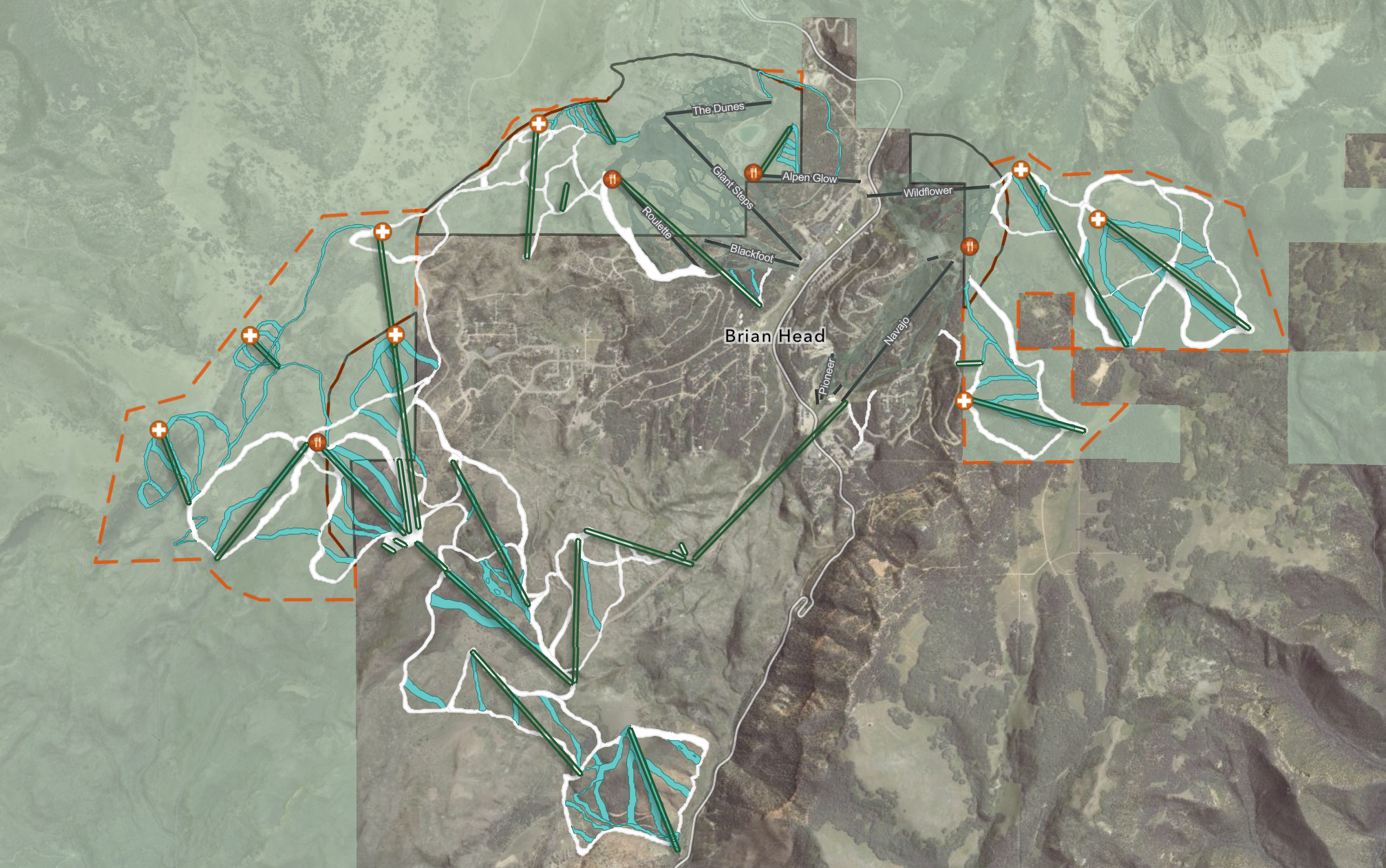
Snowmaking Lines
- Construct up to 19 miles of new snowmaking lines that would allow for 186 acres of new runs with snowmaking, requiring additional water usage.
Mountain Roads
- Construct up to 10 miles of new mountain roads and up to 5 miles of road improvements to existing roadbeds.
Underground Utilities
- Construct up to 13 miles of new underground utilities.
Snowmobile Reroute
Brian Head proposes re-routing an existing snowmobile route to avoid proposed ski runs and infrastructure.
Post-Fire Hazard Tree Removal
Post-fire hazard tree removal is also included in this proposal, which would include approximately 520 acres within the existing and proposed SUP boundaries, overlapping the 2017 Brian Head Fire burn scar in the Sid’s Peak to East Ridge Pod.
Constructed entirely on private land and subject to change, Brian Head anticipates upgrades to existing base area facilities, constructing two new base areas (Art Village and Upper Alpine Village) and a new portal (Highway 143). To manage the increased guest numbers, parking capacity would be expanded, and transportation strategies would be developed to promote carpooling and efficient public transit use on the Aspen Meadows/Gardner Plumb private development. Art Village, located entirely on private land, would be the resort’s largest base area and act as the primary learning center, tubing location, and summer activities hub with ample parking. The Upper Alpine Village would cater primarily to destination guests staying in adjacent developments. Brian Head plans to add parking spaces entirely within the private land development, aiming for roughly 1,870 proposed new spaces to cover guest and employee needs.
Analysis to be Completed
The proposed action has the potential to result in impacts to various resources including water, cultural resources, scenery, recreation, traffic/transportation, wildlife, and socioeconomics. Specific issues to be analyzed include:
- Potential impacts to hydrologic and/or groundwater resources from additional water use for expanded snowmaking operations;
- Potential impacts to dark night skies, specifically to the Cedar Breaks National Monument (CBNM), a designated International Dark Sky Park;
- The potential for new ski area infrastructure to adversely affect cultural resources and the scenic resource on DNF-managed lands (which will be analyzed for consistency with the Scenic Integrity Objectives [SIOs] in the DNF LRMP);
- The potential to alter the quality and variety of recreation opportunities available within and proximate to the proposed SUP expansion areas (which will be analyzed for consistency with the DNF LRMP’s Recreation Opportunity Spectrum [ROS] designation of Semi-Primitive Non-Motorized, Semi-Primitive Motorized, and Roaded Natural) as well as potential to impact permitted snowmobile operations for a neighboring small business;
- The potential to increase traffic on Highway 143 resulting from an increase to BHR’s comfortable carrying capacity;
- The potential to negatively impact northern goshawk nesting and Post Fledgling Area habitat, crucial summer calving habitat for Rocky Mountain elk, crucial summer fawning habitat for mule deer, habitat for American pika, and habitat for the Brian Head Mountain snail within and adjacent to the project area; and
- The potential to affect adjacent communities resulting from changes in employment, tourism revenue, and housing in Iron County.
Public Involvement
Three public open house meetings will be held during the project’s scoping period. These open houses will be held at:
- Tuesday, July 29, 2025- Brian Head Lodge, 314 W Hunter Ridge Dr, Brian Head, UT
- Wednesday, July 30, 2025- Parowan City Office, 35 E 100 N, Parowan, UT
- Thursday, July 31, 2025- Southern Utah University, Brian Head Room (Sharwan Smith Center), Cedar City, UT
Each meeting will run from 6:00 p.m. to 8:00 p.m.
These meetings are intended to inform the public about the project, provide opportunities to ask the local Forest Service questions, and help the Forest Service understand the general public’s interests and concerns regarding the project.
How to Comment and Timeframe
Following the publication of the Notice of Intent (NOI) in the Federal Register on July 15, 2025, the public will have an opportunity to provide the DNF with comments specific to this project. These comments should include appropriate information pertinent to analyzing environmental effects, identifying significant issues, and identifying potential alternatives.
Only those who submit timely and specific written comments regarding the proposed project or activity during a public comment period established by the responsible official are eligible to file an objection per 36 CFR §218.24(b)(6). For issues to be raised in objections, they must be based on previously submitted specific written comments regarding the proposed project or activity and attributed to the objector. The publication date of the NOI in the Federal Register is the exclusive means for calculating the time to submit written comments on the proposed project or activity. It is the responsibility of all individuals and organizations to ensure that their comments are received in a timely manner.
Comments should be submitted through the public participation portal on the project webpage . To submit comments using the web form on the project website, select “Get Connected” under “Project Summary” on the project’s webpage. Then select “Comment/Object on Project” to be directed to the comment web form. Written comments can also be sent to: Kevin Wright, Forest Supervisor, c/o Matt Loscalzo, Project Manager, Dixie National Forest; 820 N Main Street, Cedar City, UT 84721, or via facsimile to (435) 865- 3791. Please use the subject line “Brian Head Resort Expansion Environmental Impact Statement”.
Additional information about the proposed project can also be found on the project website. Scoping comments will be accepted for 45 days from the date of publication of the NOI in the Federal Register on Tuesday, July 15, 2025. Scoping comments are due on Friday, August 29, 2025. Comments received in response to this solicitation, including names and addresses of those who comment, will be part of the public record. Comments submitted anonymously will be accepted and considered; however to be eligible to submit an objection, individuals and entities must have provided the following during the public scoping period:
1) name and postal address (email address is recommended, but not required);
2) title of the proposed project or activity;
3) specific written comments as defined in 36 CFR §218.2 regarding the proposed project or activity, along with supporting reasons; and
4) signature or other verification of identity upon request and identification of the individual or entity who authored the comments. For comments listing multiple entities or multiple individuals, a signature or other means of verification must be provided for the individual authorized to represent each entity and for each individual in the case of multiple names.
A scanned signature or other means of verifying the identity of the individual or entity representative may be used for electronically submitted comments. Individual members of an entity must submit their own comments to establish personal identity; comments received on behalf of an entity are considered those of the entity only.
Proposed Action Infographic
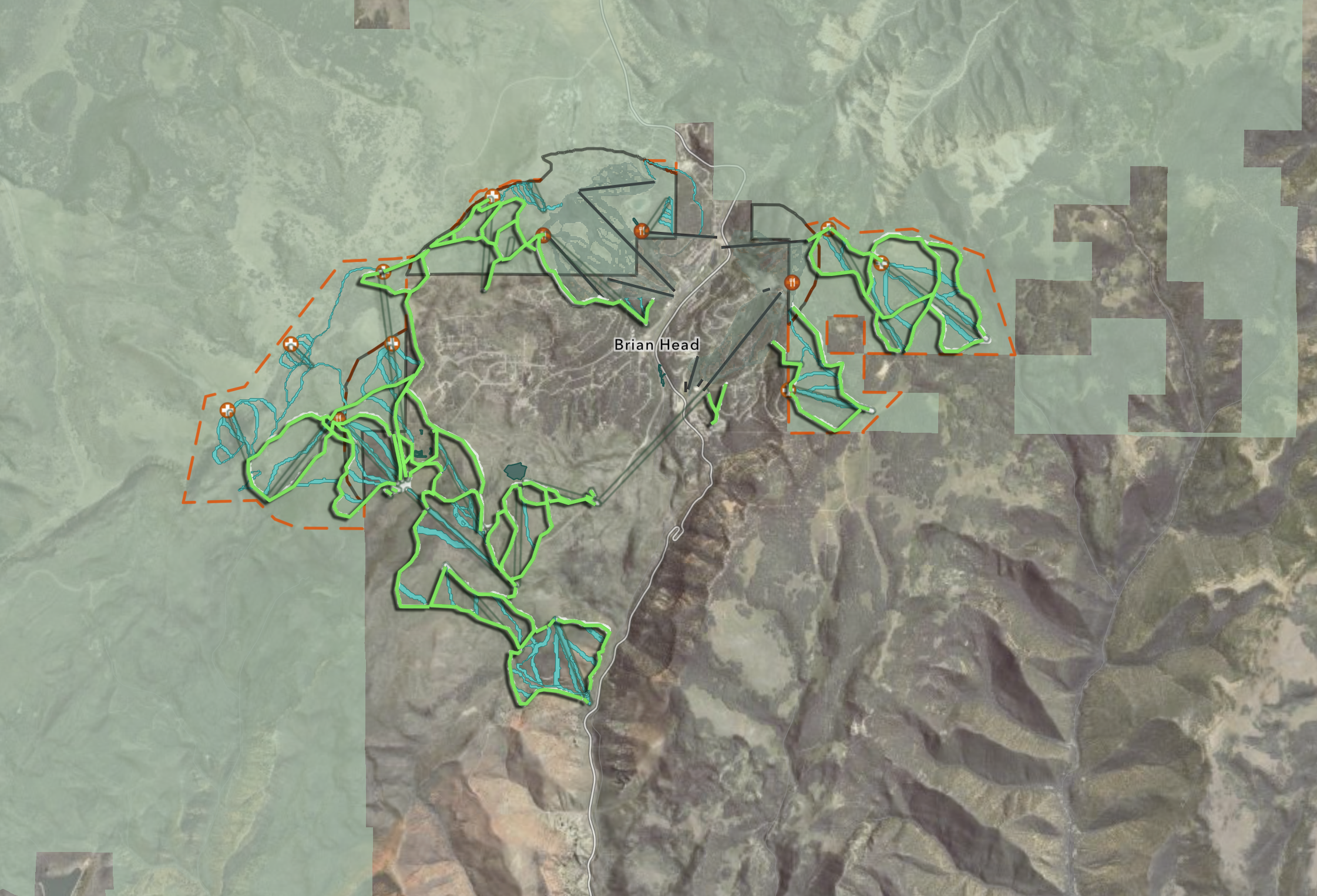
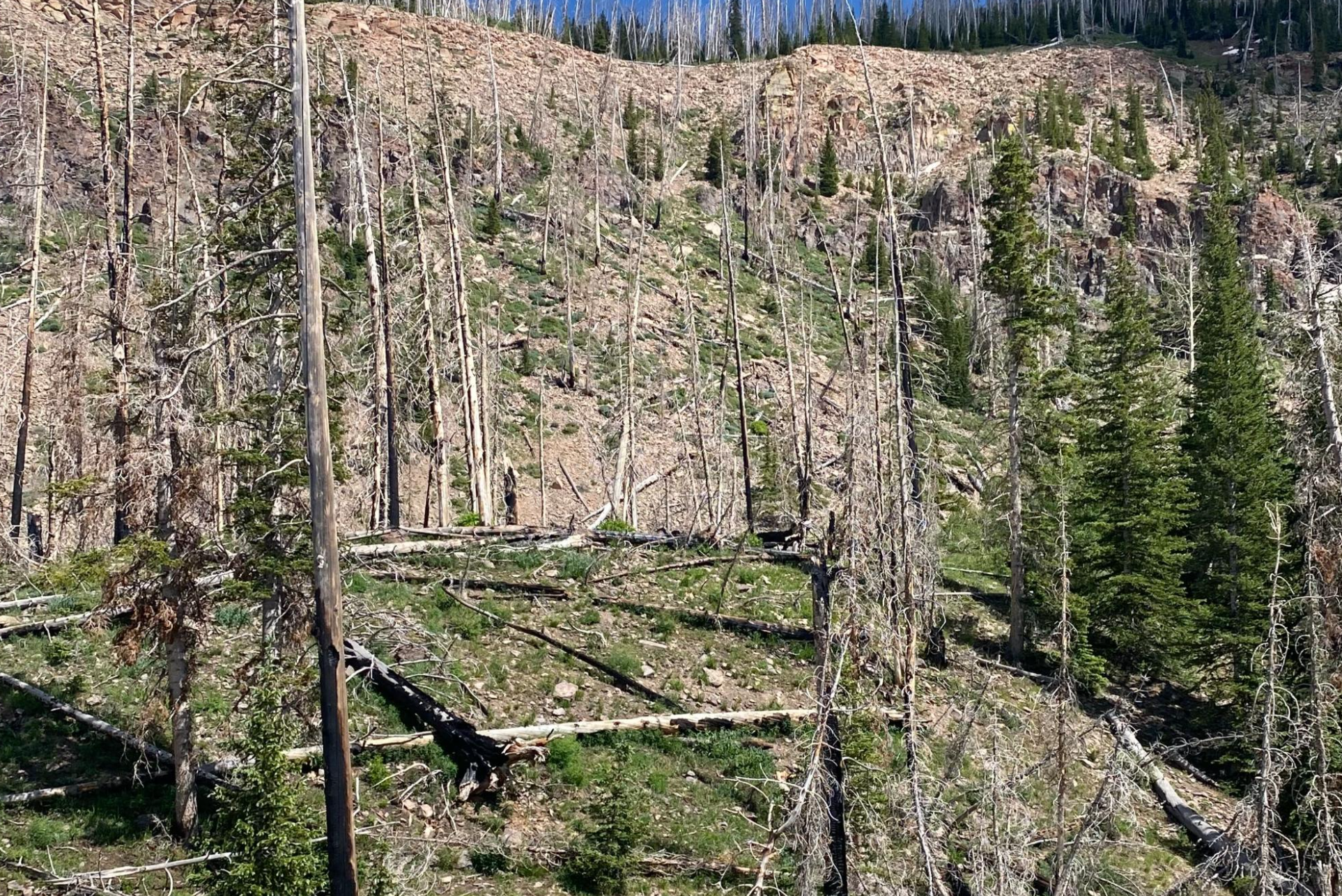
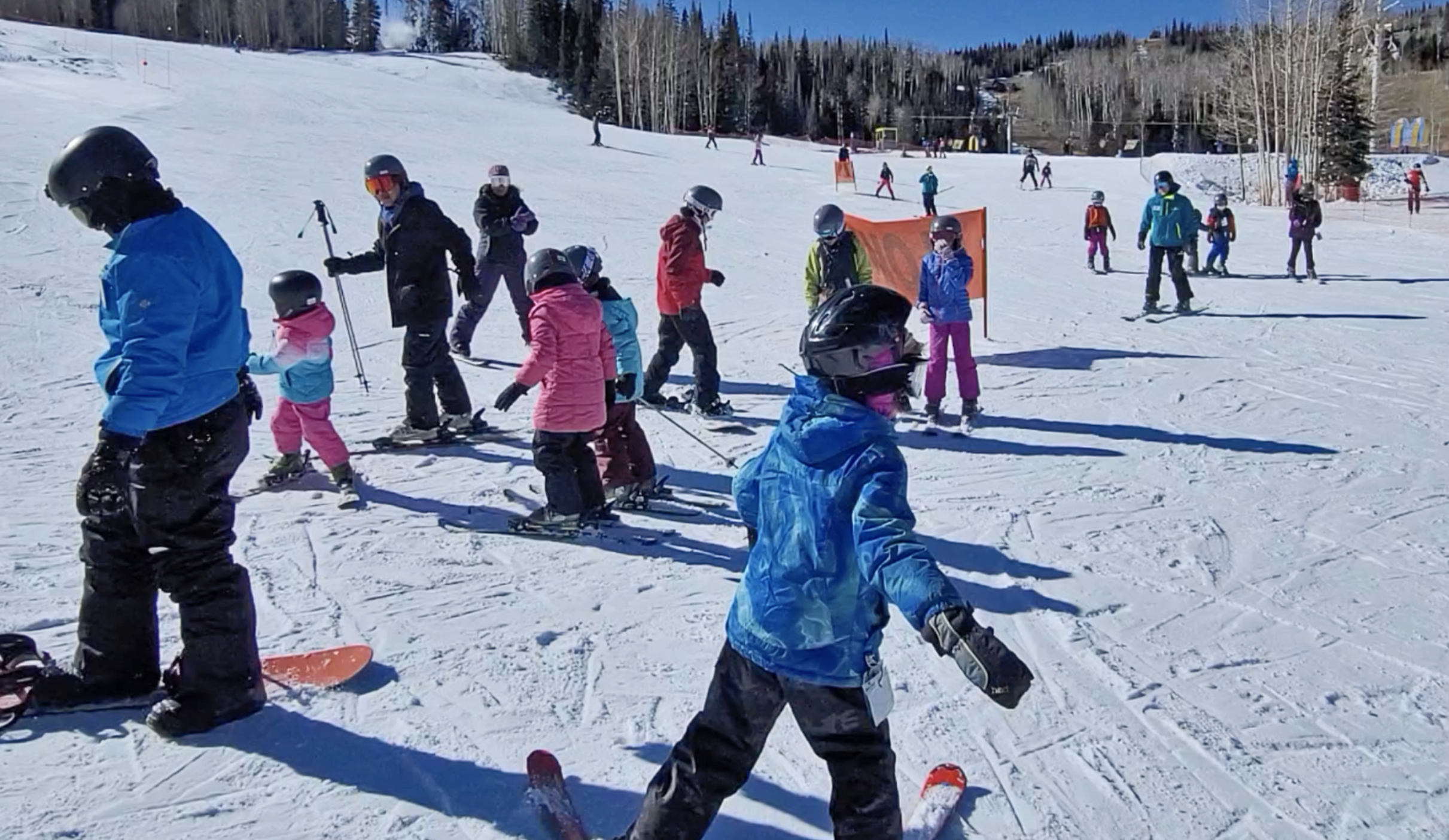
Project Timeline and Next Steps
The Brian Head Resort expansion project is designed to unfold over several years, with a comprehensive environmental impact statement (EIS) process guiding each phase. The Forest Service has initiated a 45-day public comment period, beginning July 15, 2025, and concluding on August 29, 2025. During this time, stakeholders and the public are encouraged to submit feedback on the proposed project using the comment web form available on the project webpage or by mailing comments directly to the Forest Supervisor.
Once the comment period closes, the Forest Service will review and analyze all input received, using it to inform the development of a draft EIS. This draft will be made available for further public review and comment, ensuring transparency and continued community engagement. The final EIS is anticipated to be released by June 2028, at which point the Forest Service will issue a decision regarding the proposed project.
Mountain Capital Partners, which has acquired Brian Head Resort, is committed to investing in the resort’s future by developing new lift infrastructure, ski trails, and on-mountain dining facilities. These improvements are designed to enhance the guest experience while aligning with the Forest Service’s requirements for environmental stewardship and sustainable recreation. The multi-year timeline allows for thorough analysis, public participation, and careful planning to ensure that the expansion meets both recreational and conservation goals.
Conclusion and Summary
In summary, the Brian Head Resort expansion project represents a significant investment in the future of outdoor recreation in southern Utah. By proposing to add 1,651 acres of national forest land to the existing 896-acre resort, Brian Head aims to nearly triple its size and offer a broader range of ski terrain, lift-served access, and guest amenities. The project includes the development of new lift infrastructure, expanded snowmaking lines, and enhanced guest service facilities, all designed to increase the resort’s capacity and elevate the visitor experience.
The Forest Service is leading a rigorous environmental impact statement (EIS) process to evaluate the potential effects of the proposed project on cultural resources, wildlife habitats, and neighboring communities. Public participation is a key component of this process, with a 45-day comment period providing an opportunity for stakeholders to share their perspectives and help shape the project’s direction. The project summary, along with detailed maps and documents, is available on the project webpage for public review.
Brian Head Resort’s expansion is guided by a commitment to appropriate environmental protection measures, supporting forest restoration, and facilitating responsible ski operations. The project will improve lift-served access to newly defined terrain sectors, including the Brian Head Peak pod and the Sid’s Peak to East Ridge pod, while ensuring that the unique natural resources of the Dixie National Forest are preserved for future generations. Through careful planning and community engagement, the expansion aims to balance recreation, conservation, and economic growth in this remarkable mountain setting.

